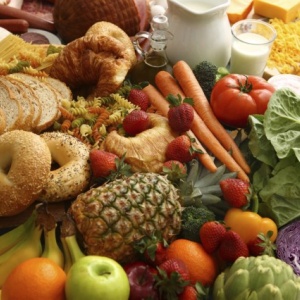
This article discusses the interplay of food requirements, food waste, food deficits, and associated GHG emissions. It estimates the agricultural GHG emissions associated with food waste, argues the importance of reducing food waste as a contribution to addressing GHG emissions and proposes a standardized method for estimating food waste for all countries.
Rather than estimating food waste by using waste factors in each step of the food supply chain, the paper applies a consistent method to estimate global food waste from 1965-2050 by looking at waste based on available and required calories.
The paper concludes that the last five decades have seen a large increase in global food availability (650 kcal/cap/day), while there has been a small increase (100 kcal/cap/day) in global food requirements per person, mostly explained by changing demographic structures which have seen increasing youth populations. However, more than physical food requirements, food demand projections also reflect growing food waste . The authors conclude that food availability across the globe is increasing with growing incomes and advancing development but that in many countries the food supply chain does not reflect the physical limits of calorie requirements, providing excess food that results in waste and overconsumption. Therefore, reducing food losses and waste to lower overall food demand can be an option to feed a growing population, as will the dampening of food demand.
Addressing this challenge will also lower the future food demand. Therefore, in addition to increasing food production (e.g. by closing crop yield gaps), the key underlying questions that remain to be answered are: how can we make the food supply chain smarter and more efficient, and how can consumers be convinced to reduce food waste?
The researchers estimate that GHGs associated with food waste were 410 Mt CO2eq/yr (in 2005). However, the researchers only assessed non-CO2 GHG emissions related to food waste; it cites FAO estimates which calculate GHG emissions associated with both food loss and waste including on-farm energy use and nonenergy-related emissions from crop and livestock to amount to 560 Mt CO2eq/yr.
Abstract
Avoiding food loss and waste may counteract the increasing food demand and reduce greenhouse gas (GHG) emissions from the agricultural sector. This is crucial because of limited options available to increase food production. In the year 2010, food availability was 20% higher than was required on a global scale. Thus, a more sustainable food production and adjusted consumption would have positive environmental effects. This study provides a systematic approach to estimate consumer level food waste on a country scale and globally, based on food availability and requirements. The food requirement estimation considers demographic development, body weights, and physical activity levels. Surplus between food availability and requirements of a given country is considered as food waste. The global food requirement changed from 2,300 kcal/cap/day to 2,400 kcal/cap/day during the last 50 years, while food surplus grew from 310 kcal/cap/day to 510 kcal/cap/day. Similarly, GHG emissions related to the food surplus increased from 130 Mt CO2eq/yr to 530 Mt CO2eq/yr, an increase of more than 300%. Moreover, the global food surplus may increase up to 850 kcal/cap/day, while the total food requirement will increase only by 2%–20% by 2050. Consequently, GHG emissions associated with the food waste may also increase tremendously to 1.9–2.5 Gt CO2eq/yr.
Citation
Hiç, C., Pradhan, P., Rybski, D., Kropp, J. P., (2016) Food Surplus and Its Climate Burdens. Environmental Science & Technology, DOI: 10.1021/acs.est.5b05088
You can read the full paper here (requires journal access).
You can find other relevant resources in our research library in the categories on food waste and surplus food, as well as in the category about theories, methods and tools.







Post a new comment »